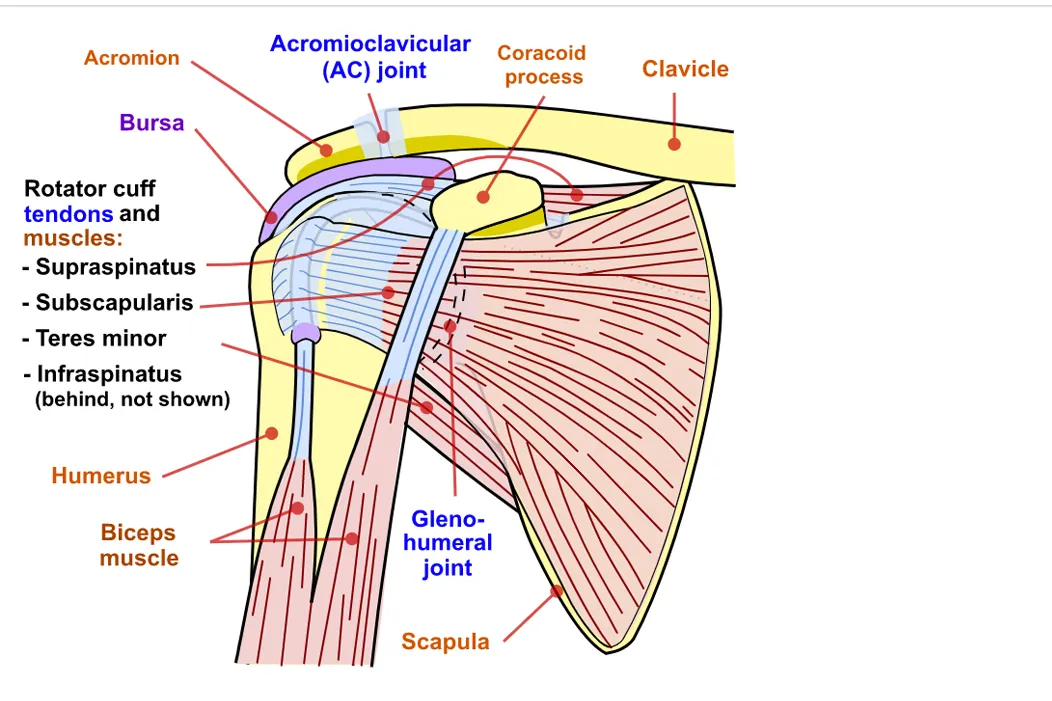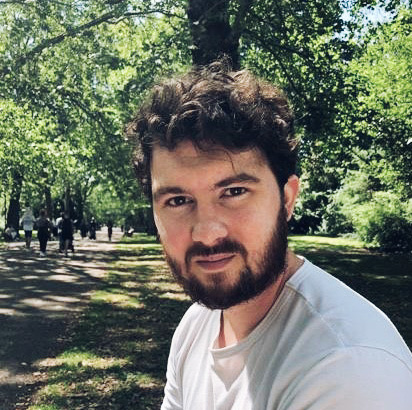Having a functioning and healthy rotator cuff is integral to being able to perform in triahtlon, especially on the swim. Here's why...
What is the rotator cuff?
The rotator cuff is a term used to describe a group of four muscles in the shoulder. These muscles are the supraspinatus, infraspinatus, subscapularis and teres minor (pictured below).
These muscles attach the shoulder blade to the humerus. The rotator cuff plays a very important part in keeping the humerus within the socket of the shoulder blade during movement of the shoulder.
Although assisting in this stability, it is also important to recognise that the humeral head is not fixed in place by your rotator cuff, and some degree of translation (movement) of the humeral head during activities such as reaching behind your back is completely healthy.

Above image courtesy of National Institute Of Arthritis And Musculoskeletal And Skin Diseases (NIAMS); SVG version by Angelito7 [ Public domain], via Wikimedia Commons
As you can see from this image, the rotator cuff muscles have different attachment points to the scapula and humerus, which is why they can work as a group of muscles when it comes to stabilisation, both collectively and individually.
For example, all four muscles are known to work almost equally in shoulder abduction, however the supraspinatus works significantly harder than the subscapularis in forward flexion. Equally, the opposite is true in backwards extension of the shoulder.
How can your rotator cuff become injured?
There are a variety of ways in which you can injure the rotator cuff, and the nature of your injury can be one way we determine what your injury is likely to be.
Previous shoulder injuries and other ongoing pains, such as lower back pain, have also been shown to be leading factors that increases the likelihood of developing a rotator cuff injury.
When people develop a rotator cuff injury, the most common complaints people present with are pain and the inability to do general activities of daily living. This is because the rotator cuff group are very important in shoulder movement and shoulder load tolerance, which is the shoulder’s ability to carry weight or absorb force.
Rotator cuff injuries can be split in to two areas; injuries to the muscle, and injuries to the tendon.
Rotator cuff muscle injuries
A rotator cuff muscle injury is more likely to come from a traumatic nature, such as from a fall or a shoulder dislocation. This is because these activities will push your shoulder joint past your comfortable shoulder range of movement, which in turn stretches the muscle excessively, creating separation of the muscle fibres.
Muscle can be either strained, where some but not all the muscle fibres are separated or torn/ruptured all together. The degree of this injury will typically be determined on your symptoms and function, or sometimes with further investigations such as an MRI.
These injuries will likely create a duller, more aching pain around the shoulder blade region, which can be hard to pinpoint. Muscle injuries will likely be worse when using the muscles, such as carrying heavy shopping or putting on a jacket.
Rotator cuff tendon injuries
Compared to the muscle injury a tendon injury typically comes from repetitive or explosive use of the shoulder, such as overhead painting or boxing. This is due to the tendon repeatedly being used in these activities, creating an overload on these structures.
Compared to muscle injuries, the location of the pain will be a sharper, more precise pain around the front of the shoulder by the head of the humerus. Pain is more likely to come when reaching above the head, especially with weight in your hand. Again, the degree of the injury will be determined by symptoms, function or in some cases an MRI.
Management of rotator cuff injuries
To first manage a rotator cuff injury, we want to make sure it is a rotator cuff injury. Knowledge of the locations and functions of the rotator cuff, along with knowledge of other differential diagnosis, is important for physiotherapists to link symptoms to a diagnosis and provide effective rehabilitation, should you present with a rotator cuff injury.
We will also help determine whether you are a suitable candidate for physiotherapy management, or if you will first require imaging or a specialist opinion.
Once identified as a rotator cuff injury, specialist management for these injuries will predominantly be exercise. Working together with your physiotherapist, you will be given a rehabilitation program of specific exercises to help build the strength of your rotator cuff muscles to focus on your injury.
Advice and education for your own management will also be provided to help with your long-term development and return to activity. In the short-term stage, therapies such as deep tissue massage and acupuncture may also be provided for symptom relief, enabling you to work more efficiently on your exercise rehabilitation.
If you have any concerns at all, like with any health issue, seek medical advice from a qualified medical practitioner, whether that's a doctor or physiotherapist.
